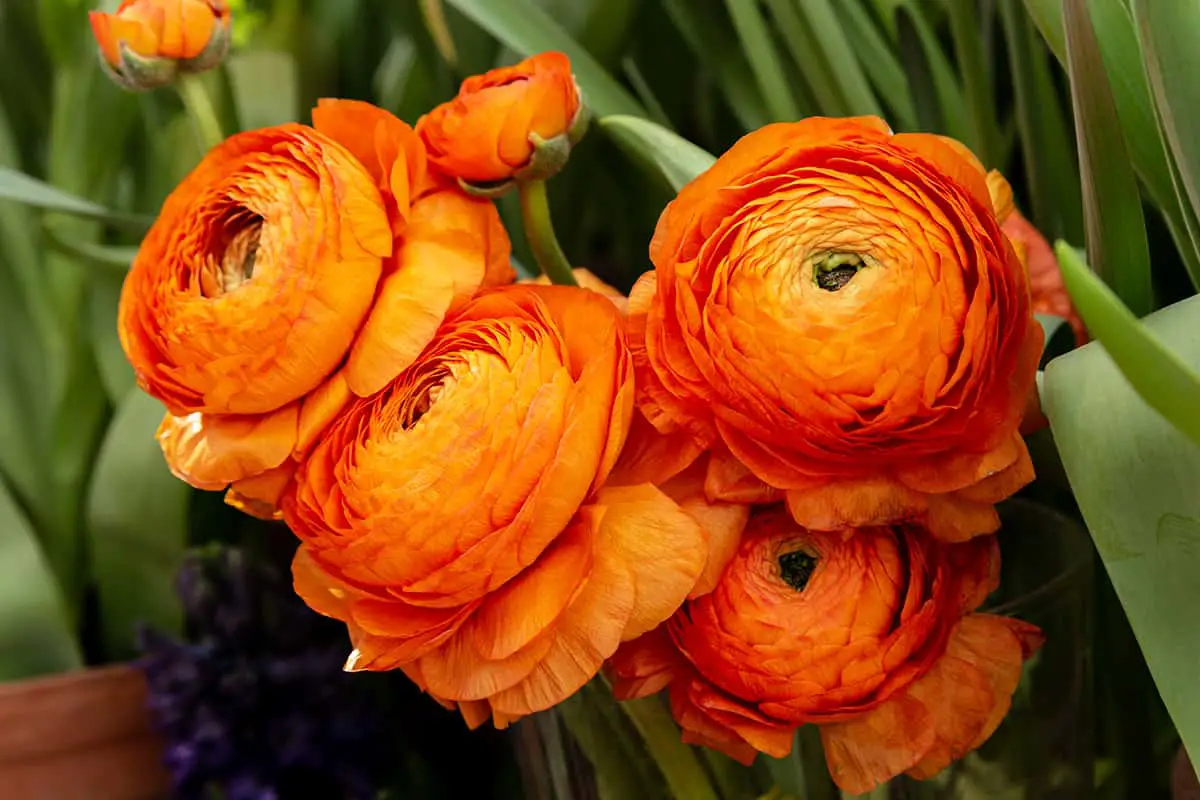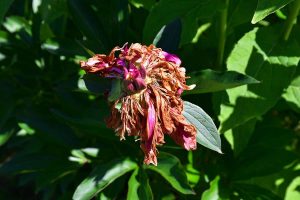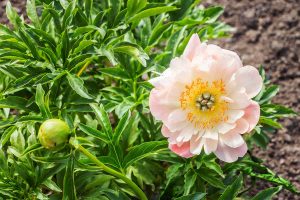Peonies come in a range of colors, which most commonly include pink, white, red, and yellow. However, you can also find peonies in shades of orange if you look hard enough.
Peonies in shades of orange are not frequently found in nature, so many of the orange peonies available are a result of hybridization, where several different species of peonies have been crossed to produce a new variety. Here we look at some of the best orange peonies around.
Are Orange Peonies Rare?
Orange peonies are not considered especially rare, since it isn’t too difficult to get your hands on an orange-colored variety, whether that be in the form of a plant, or as cut flowers.
However, since there are significantly fewer types of orange peonies available compared to pink or white peonies, you might find that you’ll pay a premium for orange peonies simply because of supply and demand.
Are Orange Peonies Popular?
Orange isn’t a color that is especially popular for flowers in the home garden, however, peonies with flowers in shades of orange are very popular as cut flowers. This is because most varieties of orange peonies are pastel shades, such as pale coral and muted apricot, and these are colors that are very on trend in interior design right now.
As such, bouquets of cut orange peonies are very popular for use in home decor. A side effect of this is also that pastel orange colors are also trending in the wedding industry, so bridal bouquets containing orange peonies are growing in popularity. This is another factor that is driving up the cost of orange peony plants.
Best Orange Peonies
Peonies that fall into the category of ‘orange peonies’ are rarely a true shade of orange. In fact, you will be hard-pressed to find a peony with carrot orange colored flowers, and instead, they tend to be more subtle shades of orange, including salmon, coral, peach, and apricot.
Many orange peonies could also be considered pink peonies because their flowers are pink-orange. Some orange peonies do not remain orange and instead go through a color transition as they are maturing. This is usually the case with Itoh peonies which are sometimes also known as color-changing peonies because their flowers have the ability to transform in color throughout their short blooming period.
Hybrid Peony ‘Coral ‘n Gold’
- Botanical name: Paeonia x ‘Coral ‘n Gold’
- USDA hardiness zone: 3 – 8
- Mature height: 2 to 3 feet
- Mature spread: 2 to 3 feet
This peony produces cup-shaped flowers which are considered to be single blooms, however, they have slightly more petals than most single flowers, so some people consider them to be more accurately described as semi-double flowers. The color of the petals is a deep shade of coral, appearing to be a mix of orange and pink.
The middle of the flower is packed with yellow stamens, and the combination of these colors gives the plant a fun, tropical look. The ‘Coral ‘n Gold’ peony is an early bloomer, arriving in late spring and early summer, with each flower typically lasting for a little over a week.
This is an award-winning plant, which was declared the winner of the Award of Landscape Merit in 2009 by the American Peony Society. The plant grows to form a bushy mound, with medium green foliage that retains interest when the flowers have faded.
Chinese Peony ‘Coral Sunset’
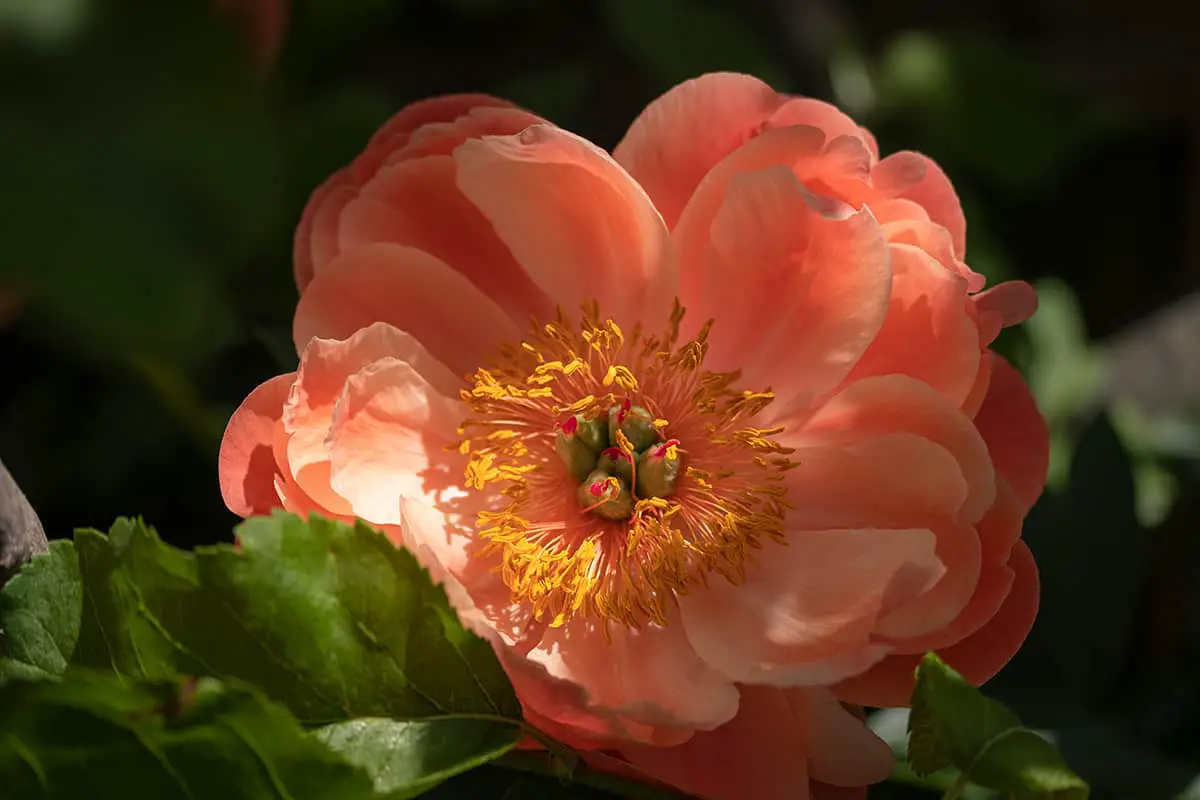
- Botanical name: Paeonia lactiflora ‘Coral Sunset’
- USDA hardiness zone: 3 – 8
- Mature height: 2 to 3 feet
- Mature spread: 2 to 3 feet
This is a color-changing peony that produces flowers starting out in a deep shade of coral, which gradually fades through shades of pale peach and pink until the petals are cream-colored. The shade development that the petals go through makes it very clear why this plant is named ‘Coral Sunset’.
This peony is an early bloomer, with flowers emerging in late spring and early summer. The flowers are semi-double and bowl-shaped, with lightly ruffled edges. Despite their large size and weight, the stems of this peony won’t need to be staked since they are strong enough to keep the flowers upright.
This is a low-maintenance peony, which has received the gold medal from the American Peony Society. Like other peonies, be sure to water at soil level to avoid getting the flowers wet, as this can cause fungal issues or cause the blooms to wilt.
Herbaceous Peony ‘Coral Charm’

- Botanical name: Paeonia ‘Coral Charm’
- USDA hardiness zone: 3 – 8
- Mature height: 2 to 3 feet
- Mature spread: 2 to 3 feet
This luscious peony plant produces stunning ruffled semi-double flowers, simply packed full of delicate coral petals. The buds emerge in late spring to early summer and open out delicately into wide, bowl-shaped blooms. The petals are a rich apricot color, and they surround deep golden stamens.
This plant has won multiple awards, including the coveted Award of Garden Merit from the Royal Horticultural Society, and the American Peony Society Gold Medal. It is an effortlessly elegant and romantic flower that is popular in cut flower bouquets and bridal arrangements.
Intersectional Peony ‘Kopper Kettle’
- Botanical name: Paeonia Itoh x ‘Kopper Kettle’
- USDA hardiness zone: 3 – 8
- Mature height: 2 to 3 feet
- Mature spread: 1 to 2 feet
This plant produces both semi-double and double flowers, which have petals flecked with pink, orange, and yellow. The overall result is a flower that appears to be the color of copper.
The petals are delicately ruffled and have an understated appeal. This is an Itoh peony, which is created by crossing a tree peony with an herbaceous peony. It is said that Itoh peonies typically remain in flower for longer than other peonies, and the ‘Kopper Kettle’ is no exception.
It will flower in the middle of the season and prefers to be grown in a position of full sun or partial shade. Shelter the plant in high winds, and ensure it is grown in soil with adequate drainage.
Intersectional Peony ‘Julia Rose’
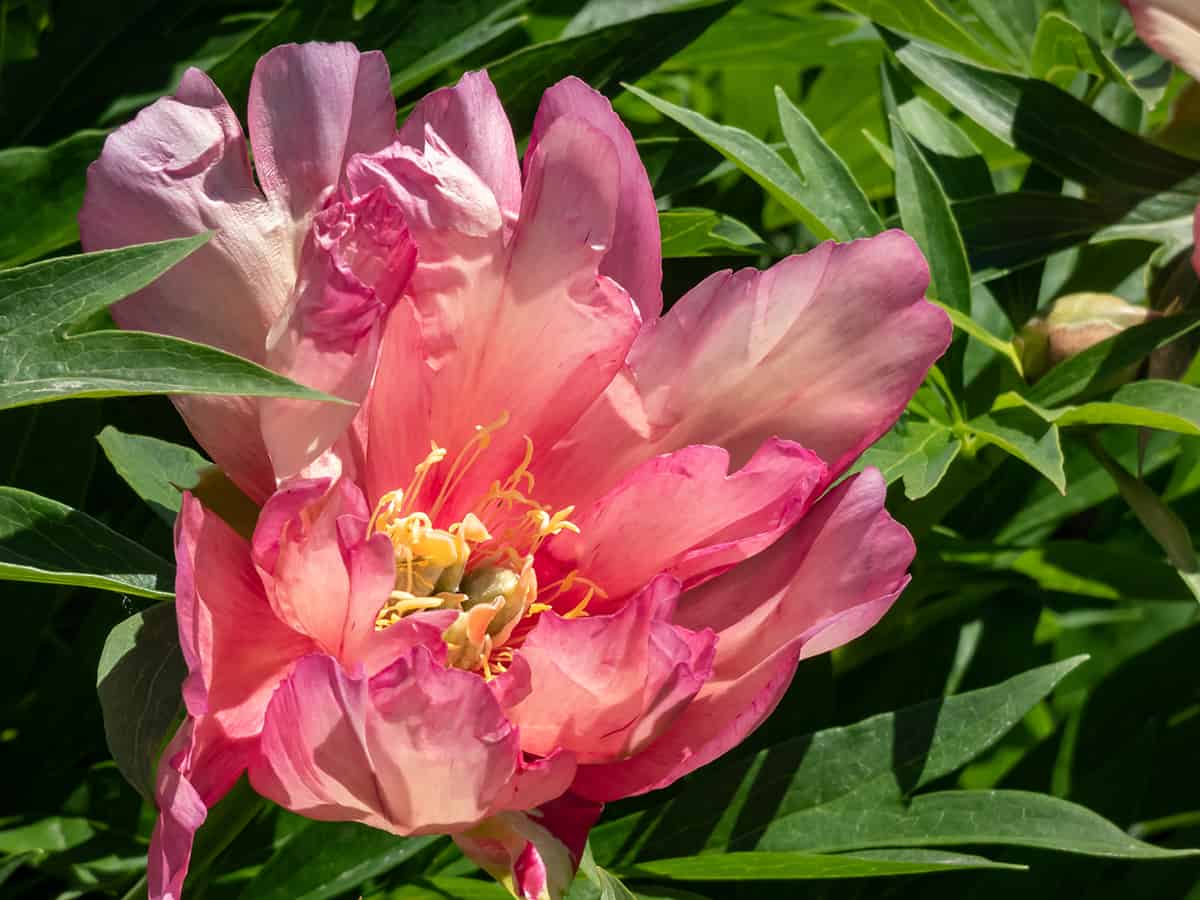
- Botanical name: Paeonia Itoh x ‘Julia Rose’
- USDA hardiness zone: 4 – 9
- Mature height: 2 to 3 feet
- Mature spread: 3 to 4 feet
This peony plant is a true showstopper. It is a prolific bloomer, producing as many as 30 flowers in a single season. The blooms are not the largest among peonies, at between four to six inches in diameter, but the colors are a delight. The flowers can be single or semi-double, and they emerge as orange-red buds, which open out apricot-orange flowers with petals flushed in purple. As the flowers mature, the petals fade to yellow.
With flowers developing at different times on the plant, you can often witness blossoms in three different colors on a single plant at the same time. This is a midseason bloomer, with flowers that typically last around two weeks.
The stems of the plant are strong and do not require staking. They are clothed in dark green foliage with a glossy finish, which maintains an attractive appearance through to fall. The ‘Julia Rose’ peony is a vigorous grower, which will form a bushy mound. It is a reliable plant that performs year after year.
Intersectional Peony ‘Singing in the Rain’

- Botanical name: Paeonia Itoh x ‘Singing in the Rain’
- USDA hardiness zone: 4 – 9
- Mature height: 3 to 4 feet
- Mature spread: 3 to 4 feet
This Itoh peony produces charming light salmon-colored flowers. They are semi-double, and they arrive on long and strong stems which hold the flowers high above the glossy foliage below. The large flowers are bowl-shaped and have very slightly ruffled petals surrounding deep yellow stamens.
The petals have a delicate satin-like sheen, giving them an ethereal look. ‘Singing in the Rain’ is a reliable plant that has a compact growth habit. It will often grow wider than it does tall, forming a spreading bush. The foliage is ovate, and emerges in a bright red in spring, before turning to medium green. The foliage will again revert to red in fall before the leaves are shed.
Chinese Peony ‘Pink Hawaiian Coral’
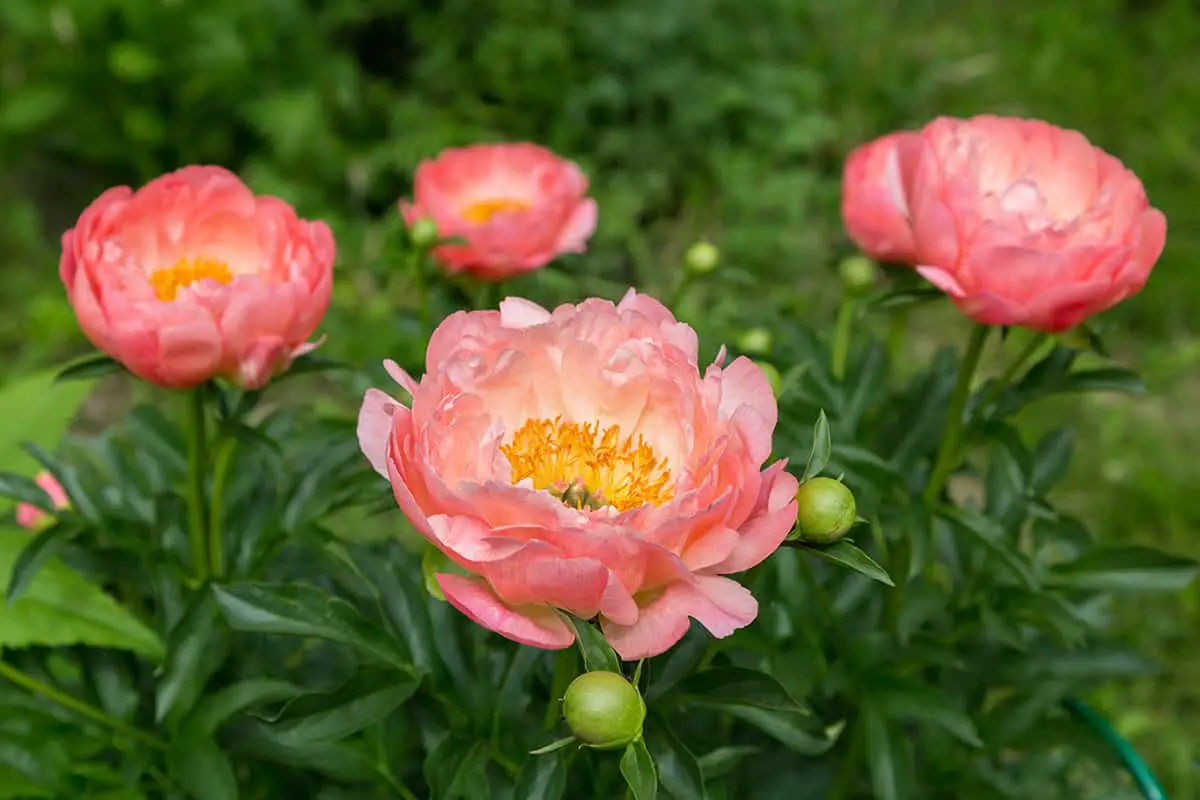
- Botanical name: Paeonia lactiflora ‘Pink Hawaiian Coral’
- USDA hardiness zone: 3 – 8
- Mature height: 2 to 3 feet
- Mature spread: 2 to 3 feet
This exceptional peony has won several awards, including the Gold Medal and the Landscape Merit Award from the American Peony Society. It produces large and glowing semi-double flowers, in wide bowl shapes. They start out a pale coral pink color before developing to apricot pink, with central golden stamens.
These flowers have a sweet fragrance, making a wonderful addition to the garden. They are early-season bloomers, which will send out flowers in late spring or early summer.
The flowers are held on long stems which rise above the glossy foliage. Like all peonies, this variety is toxic if ingested, and should be kept away from pets and children. It is very attractive to pollinators, including butterflies and bees.
